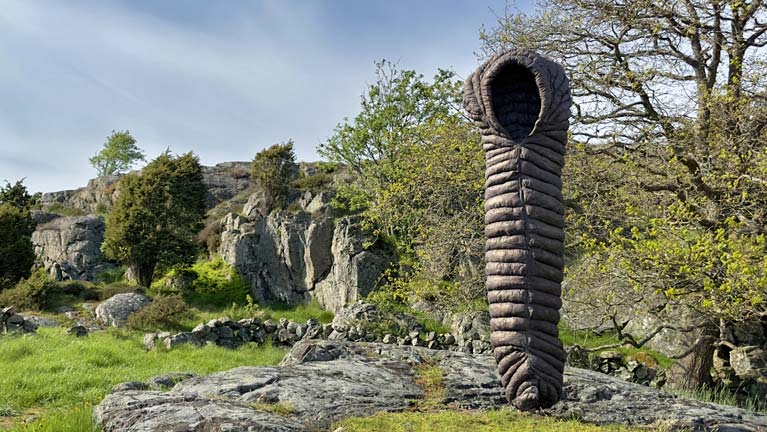

Moa Israelsson Go Gone
An abandoned sleeping bag, or a large cocoon for a gigantic caterpillar? Protection or threat? Enticing yet unnerving, Moa Israelsson’s works often convey a vague sense of danger, in the wake of a fatal incident. With objects and installations, she portrays uninhabited landscapes, where traces of former life are all that remain. This could be a postapocalyptic future, after the fall of civilisation. There is an eerie sensation that this is Earth’s twilight.
Israelsson usually works with materials that look organic. As if the objects were straight from nature, or remnants that nature has invaded. The artificial mimics the natural in her art, however. Her works are skilfully made of iron, acrylic composites, silk, latex and leather. The craftsmanship is as meticulous as the artistic intention is precise.
Out in the beautiful Pilane landscape, the hardy bronze sculpture offers a morsel of hope. Perhaps it is a reminder that life forms do not disappear completely but constantly transform. Its beauty is at once both memorable and melancholy.
Moa Israelsson, born in 1982, studied at the Royal Institute of Art in Stockholm. She alternates between various artistic genres, creating sculptures, installations and films. She has had several widely-acknowledged solo exhibitions, including at Vandalorum in Värnamo, Sörmlands Museum in Nyköping, and Lars Bohman Gallery in Stockholm. She is represented in private and public collections, such as Eskilstuna Konstmuseum and the Public Art Agency Sweden.